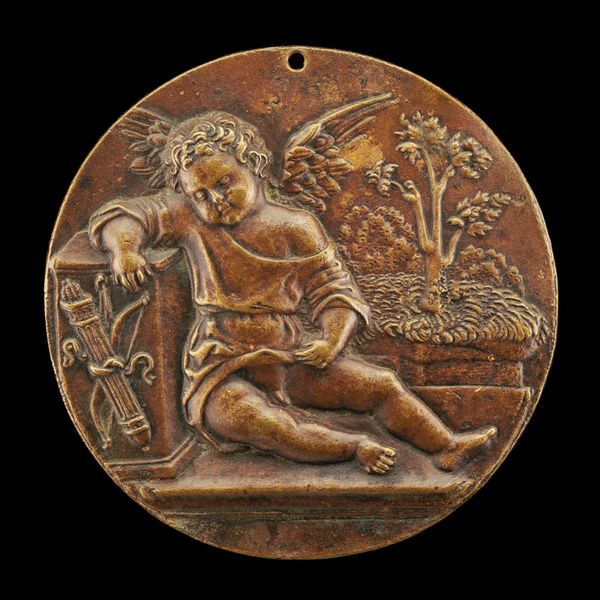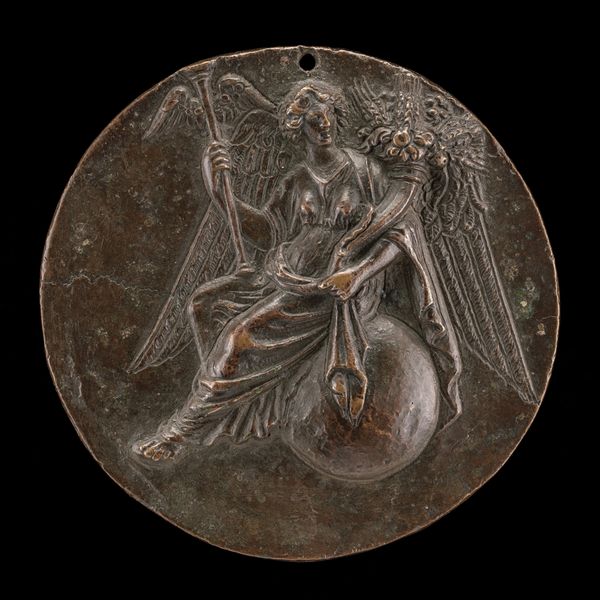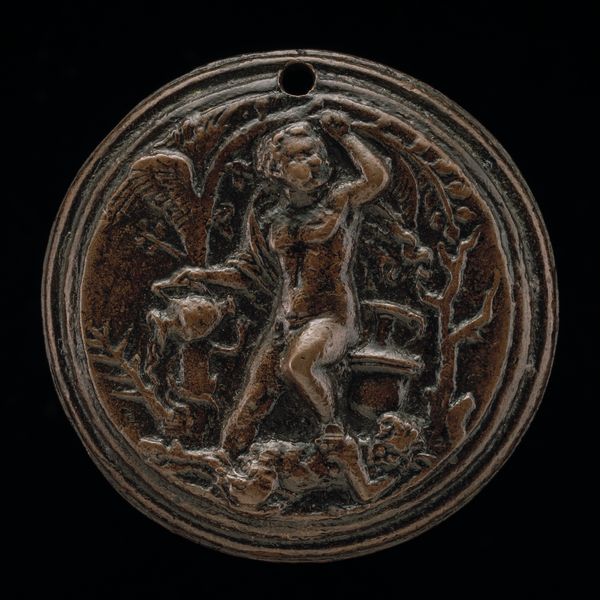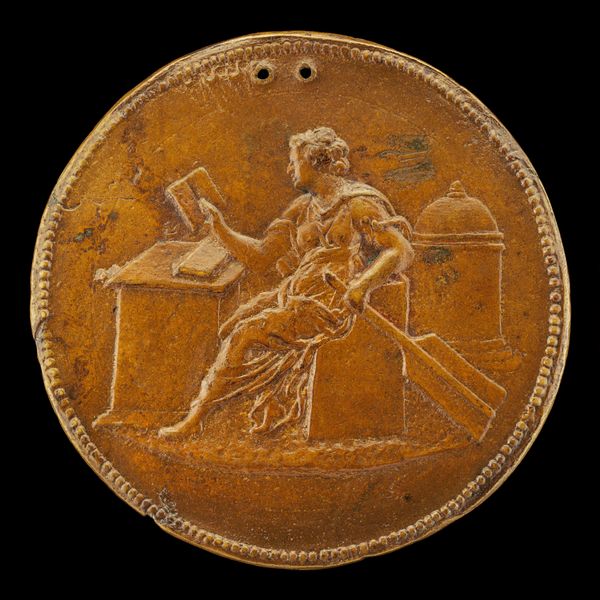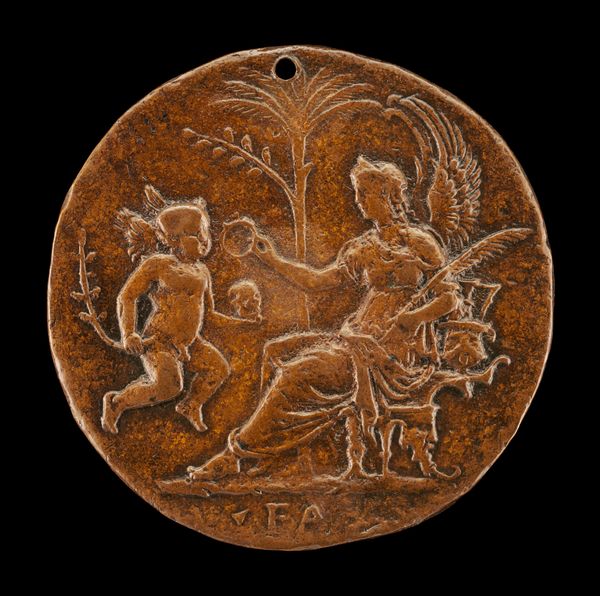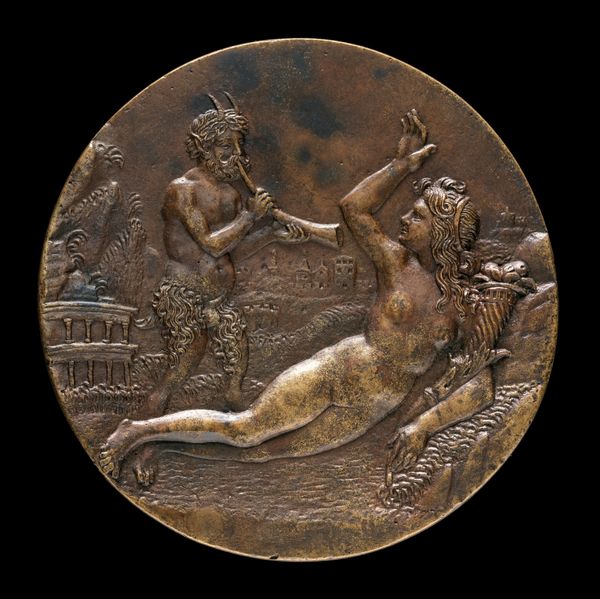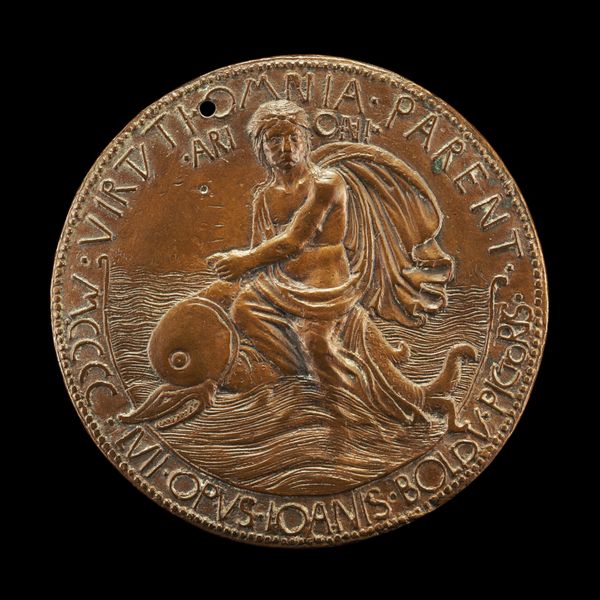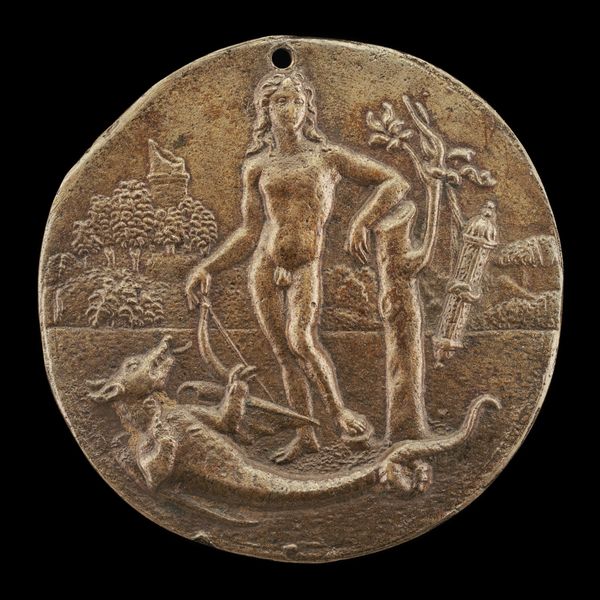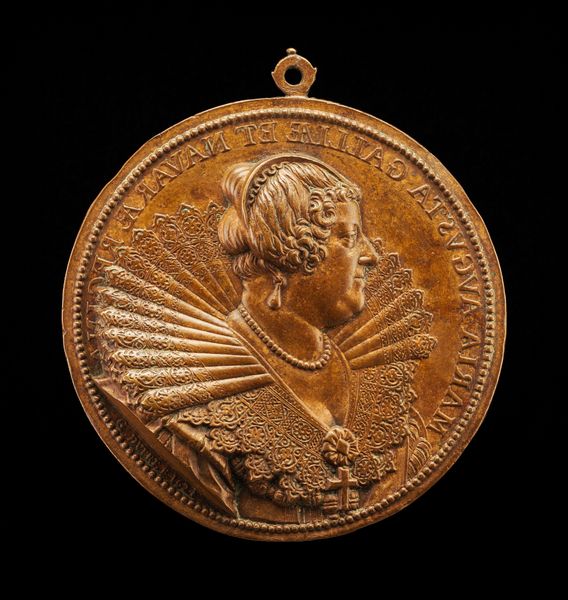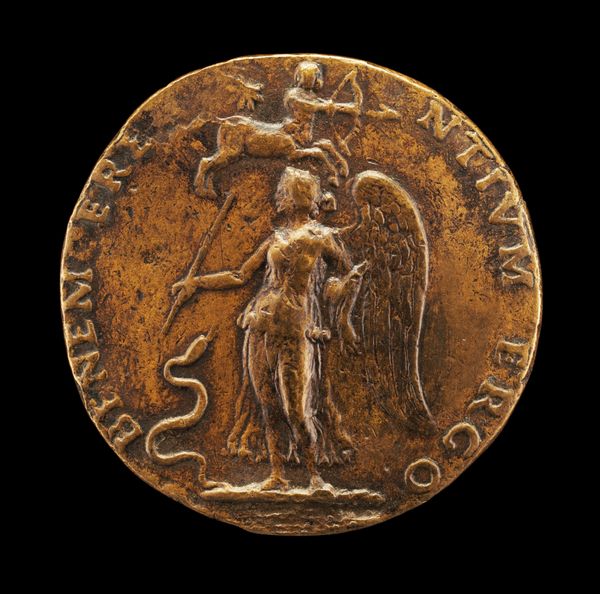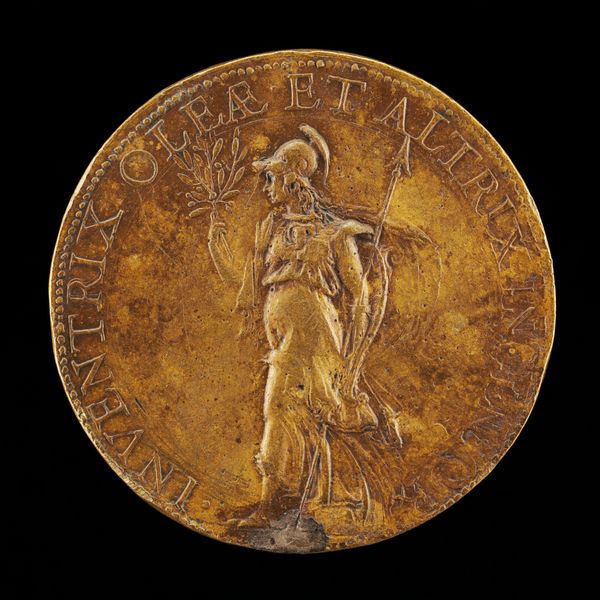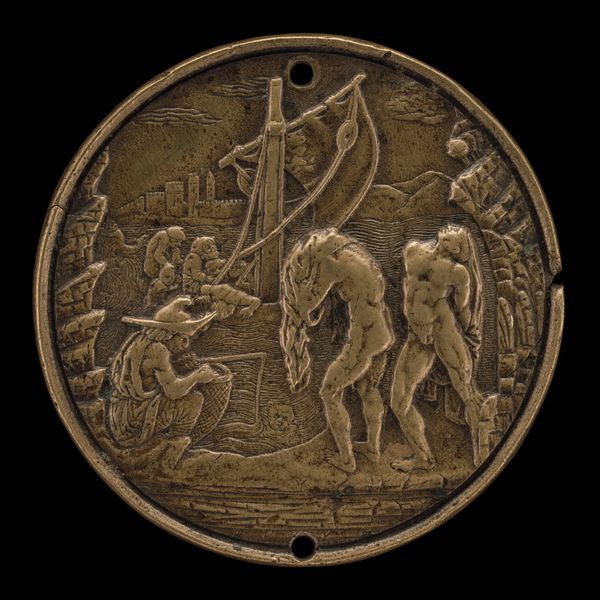
relief, bronze, sculpture
#
portrait
#
stone
#
sculpture
#
relief
#
bronze
#
figuration
#
sculpture
#
italian-renaissance
Dimensions: overall (diameter): 6.7 cm (2 5/8 in.) gross weight: 49 gr
Copyright: National Gallery of Art: CC0 1.0
This bronze plaquette of Sleeping Cupid was produced in Italy around the early 16th century by Pseudo Antonio da Brescia. The image presents us with an exhausted Cupid, slumped over his quiver, taking a break from his usual mischief. These small bronze reliefs were collected by those in elite social circles. Italy in the 1500s was a place of enormous artistic innovation, but also rigid hierarchies of power. Courtly love was a common theme, and the image of Cupid, the god of love, was frequently invoked. But here, we see Cupid not as a powerful deity, but as a tired child. Is this a comment on the exhausting nature of love, perhaps? As historians, we can look to the literature and social customs of the time to better understand the significance of this image. The early modern period was one of great social upheaval. The role of art was being questioned, and artists were beginning to experiment with new forms of expression, and to ask questions about established social norms.
Comments
No comments
Be the first to comment and join the conversation on the ultimate creative platform.
